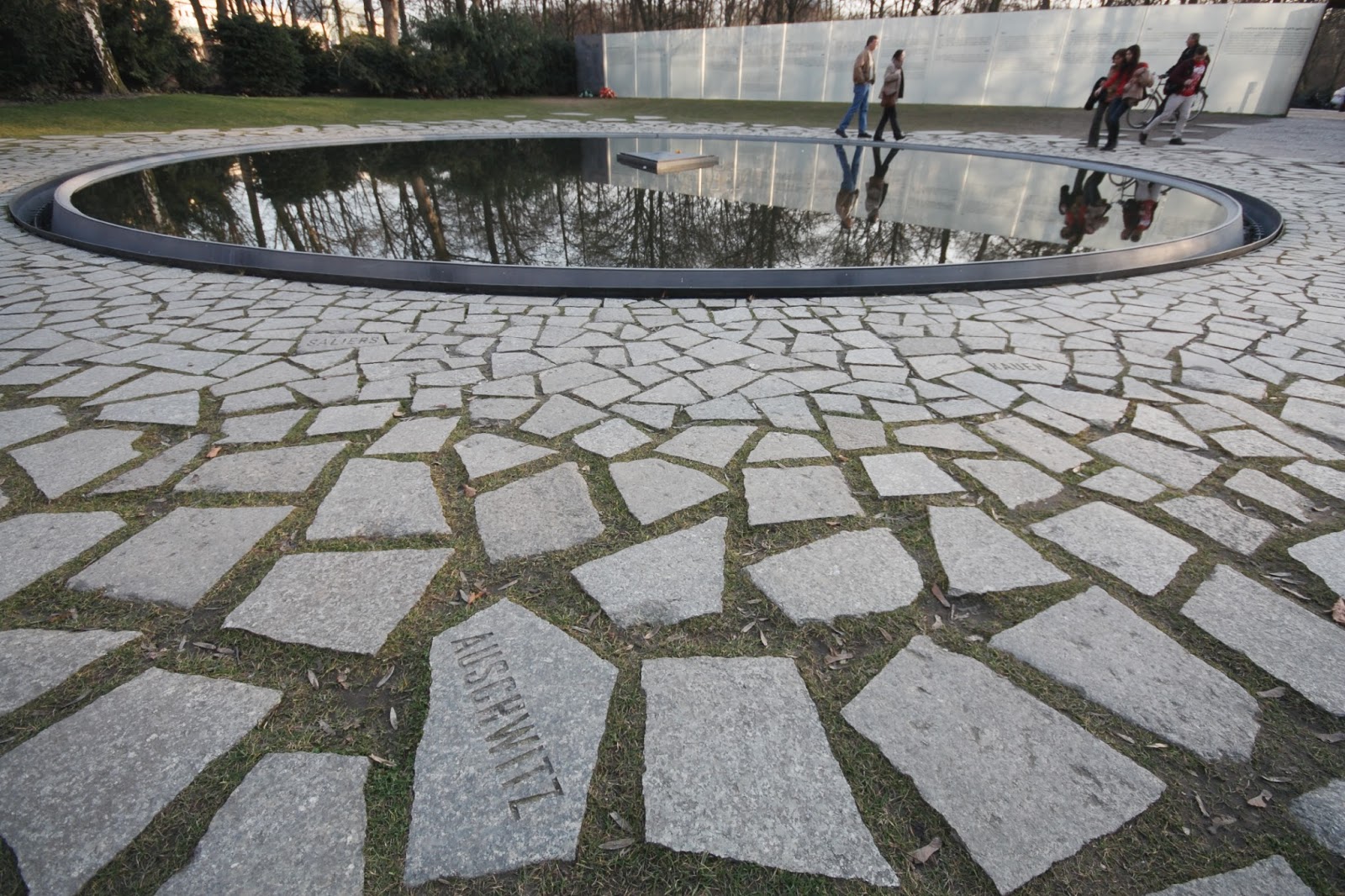Most recently, I have looked to Berlin as a beacon of historical hope, given its relentless (some say excessive) confrontation with its Nazi past. Given the willingness of so many places -- and it seems to be on the rise, in Spain, in Hungary, in the Ukraine, continuing in Japan, and so on -- to hide from the truth of the the various atrocities of the past century, I am newly impressed with Berlin's (and Germany's) insistence that they do their best not to forget.
The monument to the Roma and Sinti peoples, and the subtle but significant changes to the language of the "documentation center" beneath the holocaust memorial and elsewhere in the city's museums, is the latest effort to explore and acknowledge all the facets -- using a metaphor we apply to diamonds seems wrong -- all the knife edges of the Nazi extermination strategies.
Interestingly the new memorial, which sits inside the Tiergarten, between the Brandenburger Tor and the Reichstag -- really in the shadow of the Reichstag, which is exploited in the design -- is officially a part of the Foundation for the Memorial to the Murdered European Jews. It is a "spinoff" of the Jewish holocaust memorial. One can say a lot about this, but at the very least: here is a people that still has little organizational or political standing within the country. But enough: enough allies, and enough politicians with consciences, or guilt, to finally garner this recognition to the 500,000 who were targeted and murdered from the very beginning.





No comments:
Post a Comment